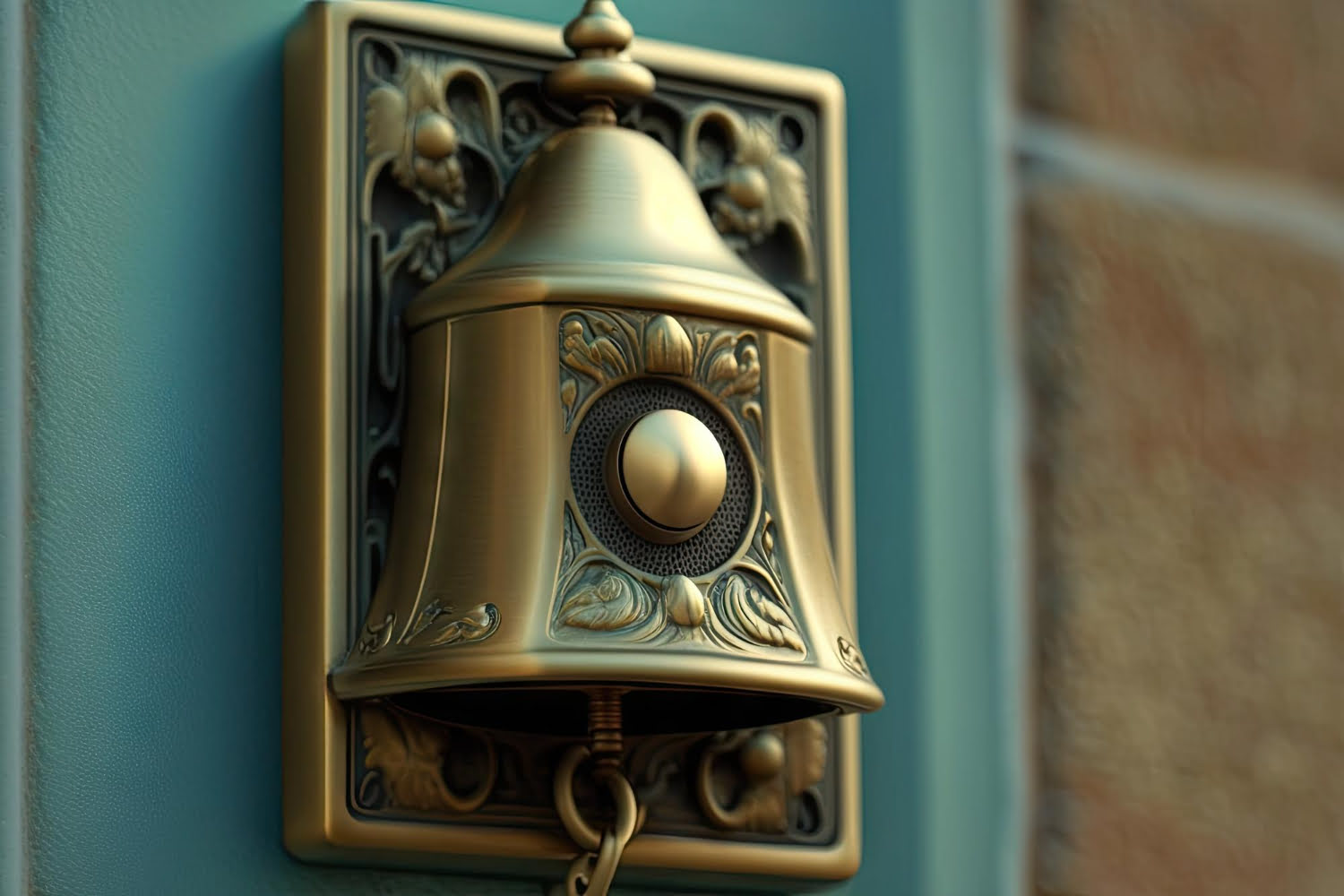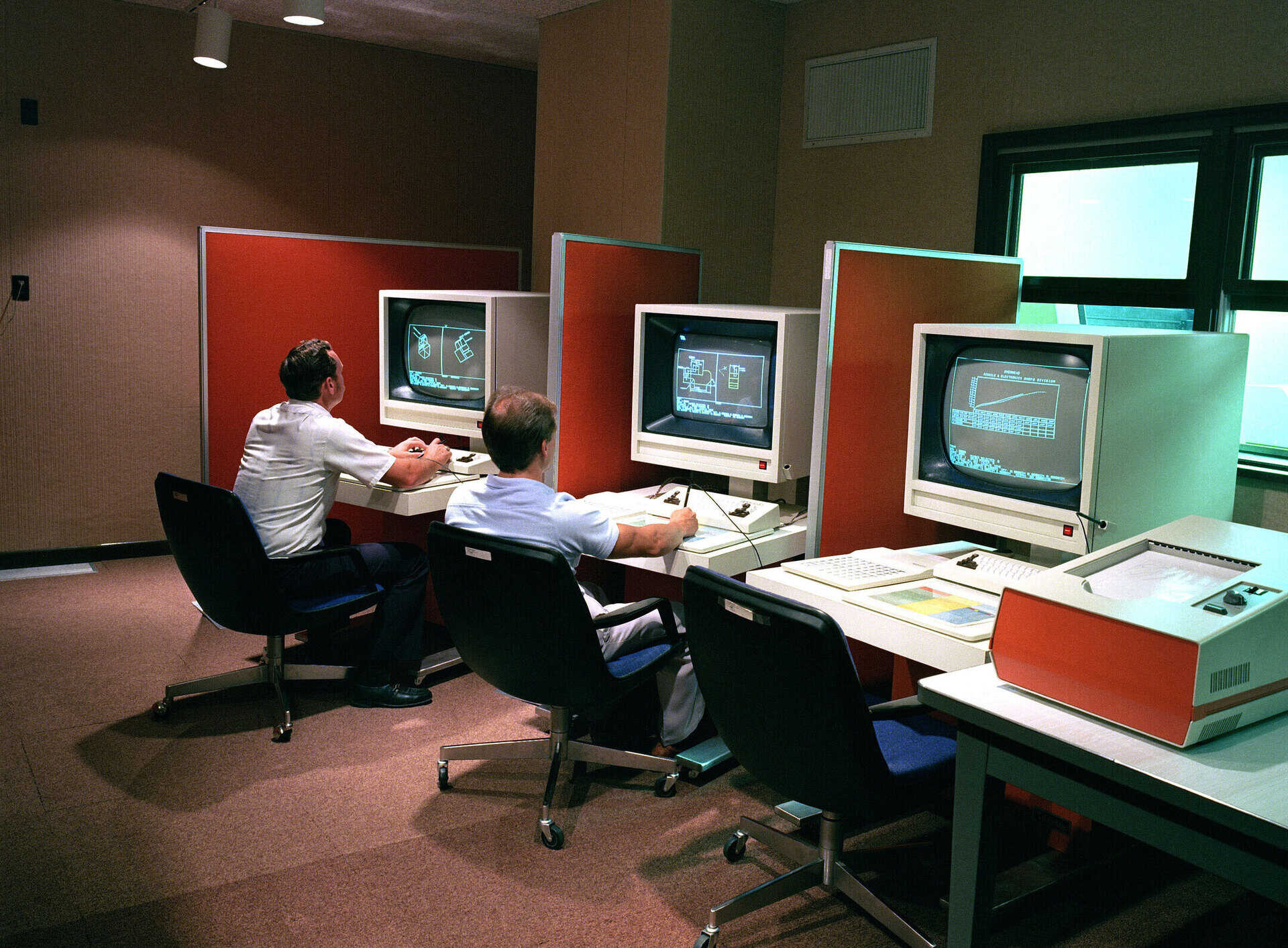

Articles
Who Invented The Doorbell
Modified: January 8, 2024
Discover the fascinating history behind the invention of the doorbell in this informative article. Explore how this essential household gadget has evolved over time.
(Many of the links in this article redirect to a specific reviewed product. Your purchase of these products through affiliate links helps to generate commission for Storables.com, at no extra cost. Learn more)
Introduction
The doorbell is an indispensable device found in almost every household today. It serves as a means of alerting occupants to the presence of visitors at their front door, providing convenience and security. But have you ever wondered about the origins of this everyday object?
Believe it or not, the history of the doorbell dates back centuries, with its evolution intertwined with advancements in technology and societal needs. In this article, we will delve into the fascinating journey of the doorbell, exploring its early beginnings and the inventors who played a pivotal role in shaping its development.
From its humble origins to the modern innovations that have made it an integral part of our lives, the doorbell has come a long way. So, let’s step back in time and rediscover the journey of this ingenious invention.
Key Takeaways:
- The doorbell has a rich history dating back to ancient civilizations, evolving from manual knockers to modern smart doorbells, showcasing human innovation and the constant desire to improve technology for convenience and security.
- The evolution of doorbell technology, from mechanical to electric to smart systems, has transformed a seemingly simple device into an indispensable gadget that enhances daily lives, bridging the gap between the outside world and personal sanctuary.
Read more: Who Invented Ring Doorbell
The Early Beginnings of Doorbells
The concept of alerting occupants to the presence of visitors at the front door goes back as far as ancient civilizations. In ancient Rome, for instance, large door knockers made of iron or bronze were used to create a loud noise when struck against the door.
During the Middle Ages, door knockers became more ornate and decorative, often featuring intricate designs and symbols that signified a homeowner’s wealth and social status. However, these knockers were still manually operated and relied on physical contact to make a sound.
The true precursor to the modern electronic doorbell can be traced back to the 18th century. It was during this time that door chimes and mechanical bells started to emerge, bringing a new level of convenience to homeowners.
One of the earliest recorded inventors of a mechanical doorbell was Joseph Henry Dunning, an English physicist. In 1816, Dunning patented a device called the “electric bell.” This primitive mechanism consisted of a series of bells connected to a manual switch. When the switch was activated, it would rotate a wheel to strike the bells, producing a ringing sound.
The advent of electricity in the late 19th century paved the way for further advancements in doorbell technology. Innovators began experimenting with using electric power to automate the ringing process and eliminate the need for manual operation.
In 1831, Joseph Henry, an American scientist, made a significant breakthrough in electromagnetic technology by developing the first electromagnet capable of producing a continuous sound. This discovery laid the foundation for the creation of electric doorbells as we know them today.
Building upon Henry’s work, an American inventor named Michael Faraday introduced the concept of the electric doorbell in the mid-19th century. Faraday’s design used an electromagnet that, when activated by an electric current, would attract a metal-based striker, resulting in a ringing sound.
However, it wasn’t until the late 19th century that electric doorbells gained widespread popularity and became more accessible to the general public. In 1881, a Scottish inventor named Alexander Graham Bell (yes, the same Bell of telephone fame) patented an early version of the electric doorbell, which featured a simple push-button switch connected to a bell mechanism.
With the invention of the electric doorbell, the way we perceive and interact with doorbells underwent a profound transformation. No longer dependent on physical exertion or being within earshot of the front door, homeowners could now conveniently be alerted to visitors from any room in the house.
The early beginnings of doorbells laid the foundation for the technological advancements that would eventually lead to the development of the modern doorbell as we know it today. In the next section, we will explore the innovations and improvements that have revolutionized doorbell technology over the years.
Early Mechanical Doorbells
After the introduction of the first mechanical doorbells in the 18th century, inventors and innovators continued to refine and improve upon the design. Early mechanical doorbells relied on a system of levers, gears, and springs to create the ringing sound when activated.
One notable early mechanical doorbell design came from an American named William Channell. In 1834, Channell invented a doorbell system that utilized a rotating crank and gears to strike a bell when the crank was turned. This advancement eliminated the need for manual operation, making it more convenient for homeowners.
Another significant improvement came from another American, Joseph Henry, whose work in electromagnetism greatly influenced the development of mechanical doorbells. In 1837, Henry devised a mechanism where an electric current would activate an electromagnet, which in turn would pull a lever to strike a bell. This innovation paved the way for the integration of electricity in doorbell systems.
Meanwhile, in Europe, a German watchmaker by the name of Johann Philipp Wagner introduced an innovative mechanical doorbell mechanism in the mid-19th century. Known as the “vibrating bell,” Wagner’s doorbell utilized a clapper that vibrated against the metal disc when a lever was pulled, producing a continuous ringing sound. This design was considered a significant improvement over earlier mechanical doorbell systems.
As the Industrial Revolution progressed, more sophisticated mechanical doorbell designs emerged. These designs featured intricate mechanisms that employed a combination of springs, gears, and levers to generate the ringing sound. Some even included decorative elements, such as ornate casings and engravings, to add aesthetic appeal to the doorbell.
However, as mechanical doorbells relied on physical mechanisms and moving parts, they were not without their limitations. These doorbells were susceptible to wear and tear, requiring regular maintenance and occasional repairs. Moreover, the sound produced by these doorbells was often limited in volume, making it challenging to hear from a distance or in noisy environments.
Despite these drawbacks, mechanical doorbells represented a significant leap forward in doorbell technology during their time. The innovation and ingenuity demonstrated in these early designs laid the groundwork for the subsequent advancements that would revolutionize doorbell technology in the years to come.
In the next section, we will explore how the advent of electricity and the introduction of electric doorbells marked a turning point in the evolution of doorbell technology.
The electric doorbell was invented by Joseph Henry in 1831. He created a system using electromagnetism to produce a ringing sound when a button was pressed.
The Electric Doorbell Revolution
The introduction of electricity in the late 19th century marked a pivotal moment in the evolution of doorbell technology. The utilization of electric power paved the way for the development of electric doorbells, which revolutionized the way we interacted with doorbells.
One of the key figures in the electric doorbell revolution was Thomas Watson, an assistant to Alexander Graham Bell. In 1872, Watson designed a doorbell system that incorporated an electric button connected to a bell mechanism. This system allowed for a more convenient and reliable means of alerting homeowners to visitors at their front door.
Electric doorbells operated on a simple principle. When the doorbell button was pressed, it completed an electrical circuit, sending a signal to an electromagnet located inside the house. The electromagnet would then attract a metal striker, causing it to strike a bell or gong, producing the familiar ringing sound.
The introduction of electric doorbells brought numerous advantages over their mechanical counterparts. They were more reliable, as they did not rely on moving parts and were less prone to malfunctioning or wearing out. Electric doorbells also offered a stronger and more audible sound, ensuring that occupants could hear the doorbell from various parts of the house.
In addition to their functional improvements, electric doorbells also provided homeowners with more customization options. Different types of bells and gongs could be used, allowing individuals to choose the style and sound that suited their preferences. Furthermore, electric doorbells could be connected to multiple locations within the house, ensuring that occupants did not miss a visitor, no matter where they were.
The electric doorbell revolution continued to evolve as new technologies emerged. In the early 20th century, inventors introduced innovations such as wireless doorbell systems that utilized radio frequency transmission to communicate between the doorbell button and the bell mechanism. This eliminated the need for complex wiring and provided even greater flexibility in the placement of doorbell buttons and receivers.
In the later part of the 20th century, advancements in integrated circuits and microprocessors led to the development of more sophisticated electric doorbell systems. These systems incorporated features such as programmable chimes, volume controls, and visual indicators, catering to the diverse needs and preferences of homeowners.
Today, electric doorbells have become a standard feature in homes around the world. They have evolved from simple, wired systems to include wireless options, smart doorbell cameras, and intercom functionalities. These advancements have transformed doorbells into multi-functional devices that enhance both convenience and security.
The electric doorbell revolution has not only provided homeowners with a more convenient way of being notified of visitors but has also contributed to the overall safety and security of households. The ability to answer the door remotely, view live video feeds, and communicate with visitors through smart doorbell systems has become an essential feature in modern home security.
In the following section, we will explore the modern innovations and advancements that have elevated doorbell technology to new heights.
The Modern Doorbell Innovation
In the modern era, doorbell technology has continued to evolve and adapt to the changing needs and expectations of homeowners. Advancements in electronics, wireless communication, and smart home technologies have paved the way for innovative doorbell solutions that offer enhanced functionality, convenience, and security.
One of the most significant innovations in recent years is the rise of smart doorbells. Smart doorbells integrate advanced technologies such as video cameras, motion sensors, and two-way audio communication to provide homeowners with a comprehensive doorbell experience.
With a smart doorbell, homeowners can remotely view live video feeds and monitor their front door through a smartphone or tablet. This feature enables them to see and communicate with visitors in real-time, even when they are away from home. Additionally, motion sensors can trigger instant alerts, providing an added layer of security and awareness.
Furthermore, smart doorbells often come with additional features like facial recognition, allowing users to receive personalized notifications when familiar faces are detected. Some models even integrate with smart home systems, enabling seamless integration with other devices like smart locks, lighting systems, or voice assistants.
The introduction of wireless technology has also revolutionized doorbell systems. Wireless doorbells eliminate the need for complex wiring installations, offering easy installation and flexibility in placement. They can be placed in any desired location within the home and are not restricted to the main entrance.
Many wireless doorbells also come with a variety of chime options, allowing users to customize the sound according to their preferences. This feature adds a touch of personalization and enables homeowners to select a chime that suits their style and ambiance.
Moreover, wireless doorbells often have an extended range, ensuring that users can hear the doorbell in various parts of the house and even in outdoor areas. This enhances convenience and prevents occupants from missing any visitors, regardless of their location within the property.
Another notable innovation in modern doorbells is the integration of compatibility with virtual voice assistants. This feature allows users to connect their doorbell system with virtual assistants like Amazon Alexa or Google Assistant, enabling hands-free control and interaction with the doorbell functionality. Users can ask the virtual assistant to answer the door or check the live video feed without needing to physically interact with the doorbell.
Furthermore, advancements in battery technology have improved the overall performance and reliability of doorbells. Long-lasting and rechargeable batteries ensure that doorbells stay operational for extended periods, reducing the need for frequent battery replacements.
The continuous evolution and innovation in doorbell technology not only provide convenience and security for homeowners but also cater to the ever-changing needs and expectations of modern living. As smart home ecosystems continue to expand and new technologies emerge, we can expect even more groundbreaking innovations in the realm of doorbell systems.
As we conclude this exploration of doorbell evolution, it is evident that from their humble beginnings as mechanical knockers to the intelligent and interconnected devices of the present, doorbells have evolved into indispensable gadgets that enhance our daily lives.
Whether it’s the convenience of hearing a familiar chime, the security of visual monitoring, or the seamless integration with smart home systems, the modern doorbell has transformed the way we interact with our homes and the outside world.
So, the next time you hear the familiar ding-dong or receive a notification on your smartphone, take a moment to appreciate the journey of the doorbell and the remarkable innovations that made it possible.
Read more: Who Invented Woodworking?
Conclusion
The doorbell, a seemingly simple device that alerts us to visitors at our front door, has a rich and fascinating history. From the ancient door knockers to the modern smart doorbells, the evolution of doorbell technology is a testament to human ingenuity and innovation.
The early beginnings of doorbells can be traced back to ancient civilizations, where large knockers were used to create a loud noise when struck against the door. The introduction of mechanical doorbells in the 18th century brought about convenience and advancements in design, paving the way for the eventual integration of electricity.
The electric doorbell revolution in the late 19th century marked a turning point in doorbell technology. With the utilization of electricity, doorbells became more reliable, producing a stronger and more audible sound. Innovations like wireless doorbells and smart doorbells further enhanced convenience and security for homeowners.
Today, modern doorbell innovations are pushing the boundaries of what this humble device can do. Smart doorbells, with their integration of video cameras, motion sensors, and two-way audio, provide an elevated level of convenience and protection. Wireless doorbells offer flexibility in placement, and compatibility with virtual voice assistants adds a new level of control and interaction.
The journey of doorbell evolution highlights the constant desire to improve upon existing technology, making it more efficient, user-friendly, and seamlessly integrated into our daily lives. From the basic functionality of alerting us to visitors to becoming a vital part of home security systems, doorbells have come a long way.
As we reflect on the history and advancements in doorbell technology, we can’t help but marvel at the immense impact such a seemingly small device has on our daily lives. The doorbell serves as a bridge between the outside world and our personal sanctuary, providing us with the comfort of knowing who is at our door and enhancing our overall sense of security.
So, the next time your doorbell rings or you receive a notification on your smartphone, take a moment to appreciate the innovation, creativity, and dedication of the countless inventors, engineers, and designers who have contributed to the evolution of the humble doorbell.
In this ever-evolving era of technology, we can only anticipate what the future holds for doorbell innovations. Rest assured, the doorbell will continue to evolve, adapt, and surprise us with its ever-expanding capabilities, ensuring that it remains an essential device in our homes for generations to come.
Frequently Asked Questions about Who Invented The Doorbell
Was this page helpful?
At Storables.com, we guarantee accurate and reliable information. Our content, validated by Expert Board Contributors, is crafted following stringent Editorial Policies. We're committed to providing you with well-researched, expert-backed insights for all your informational needs.















0 thoughts on “Who Invented The Doorbell”